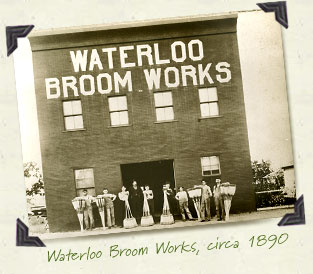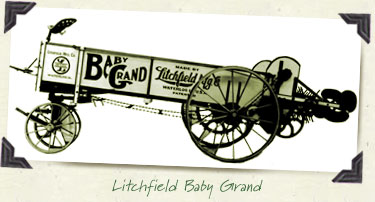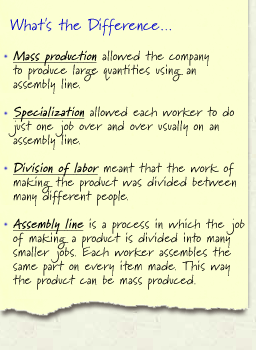
Waterloo’s earliest industries were much less complex than
later ones. For example, just a few men could run the first saw mills,
blacksmith shops and grist mills. The Waterloo Broom Works had fewer
than 10 employees. Making a broom was not a very complicated task
compared to making a gasoline engine.

As the industries developed, they became more complex. Soon industries
in Waterloo were making products that were much more complicated than
a broom.

For example, the Litchfield Manufacturing Company produced the Litchfield
Baby Grand. This piece of farm equipment was called a manure spreader.
It had many moving parts. Because all of the parts for this product
were made in the factory, specialization and division
of labor were used by the company. Using an assembly line,
the company was able to mass produce their product. The Litchfield
Company employed 85 workers when it opened in Waterloo in 1903. By
1922, the Litchfield Company employed over 450 people!

As Waterloo’s manufacturing industries grew and developed most
of the factories used the mass production to make their products.

|



